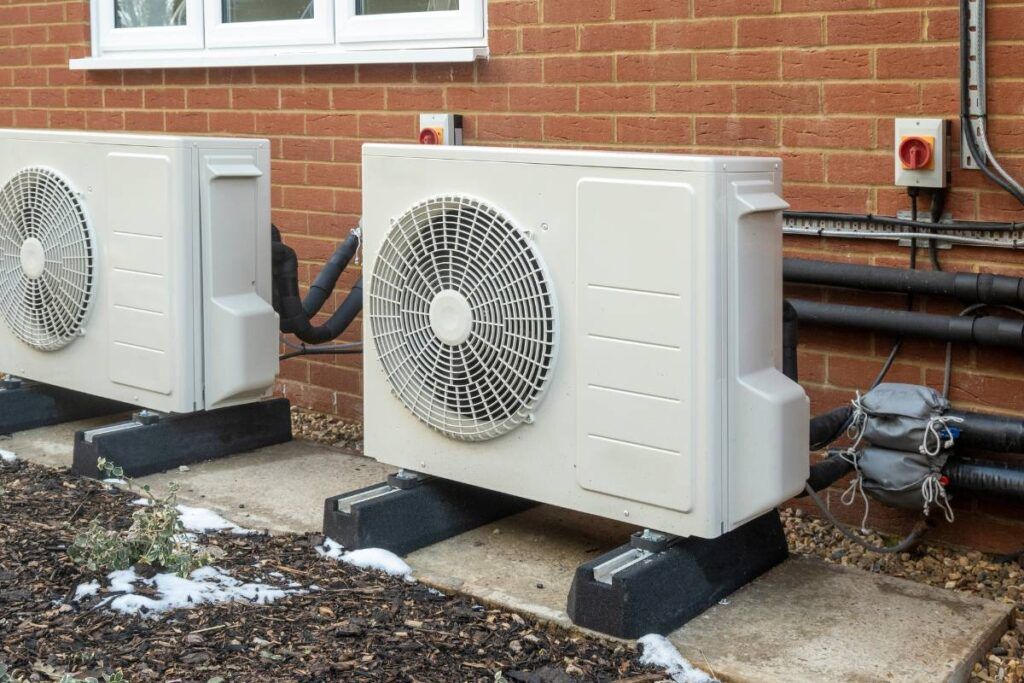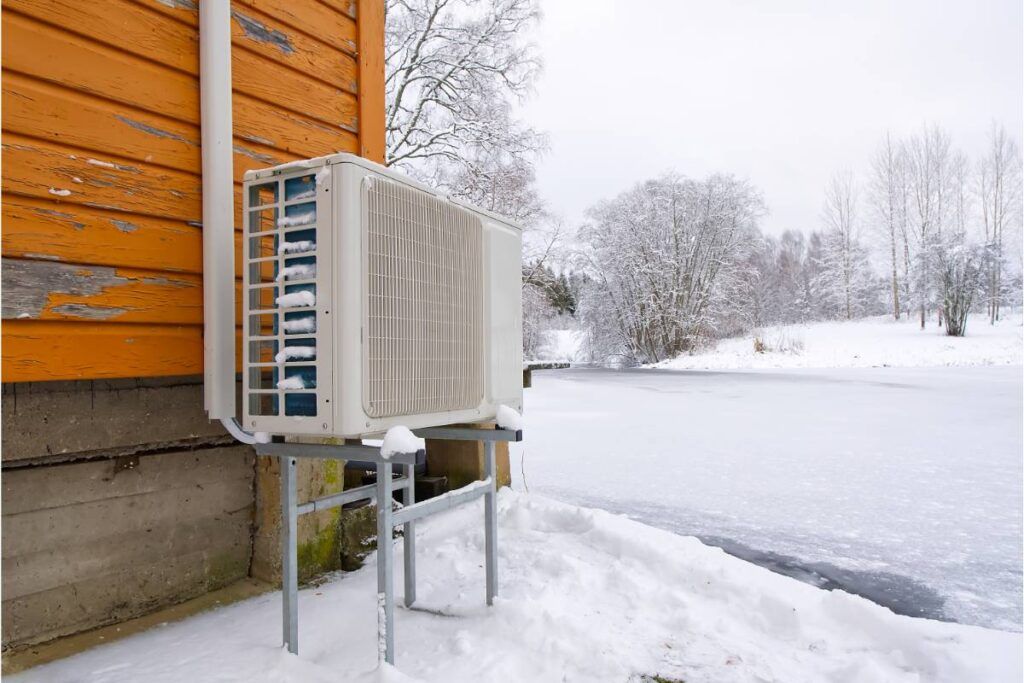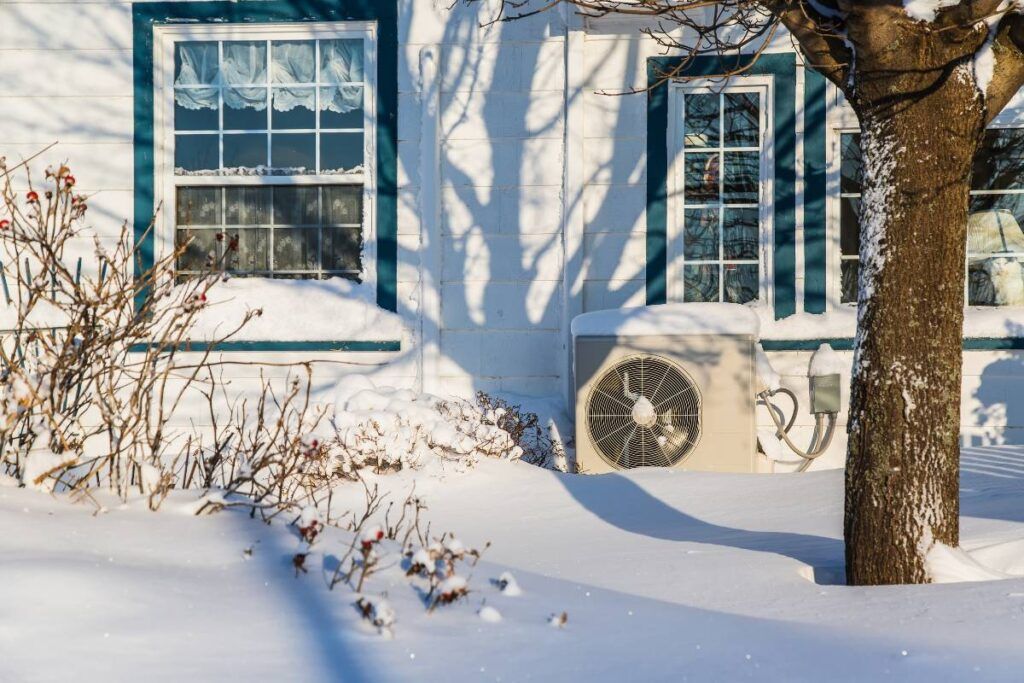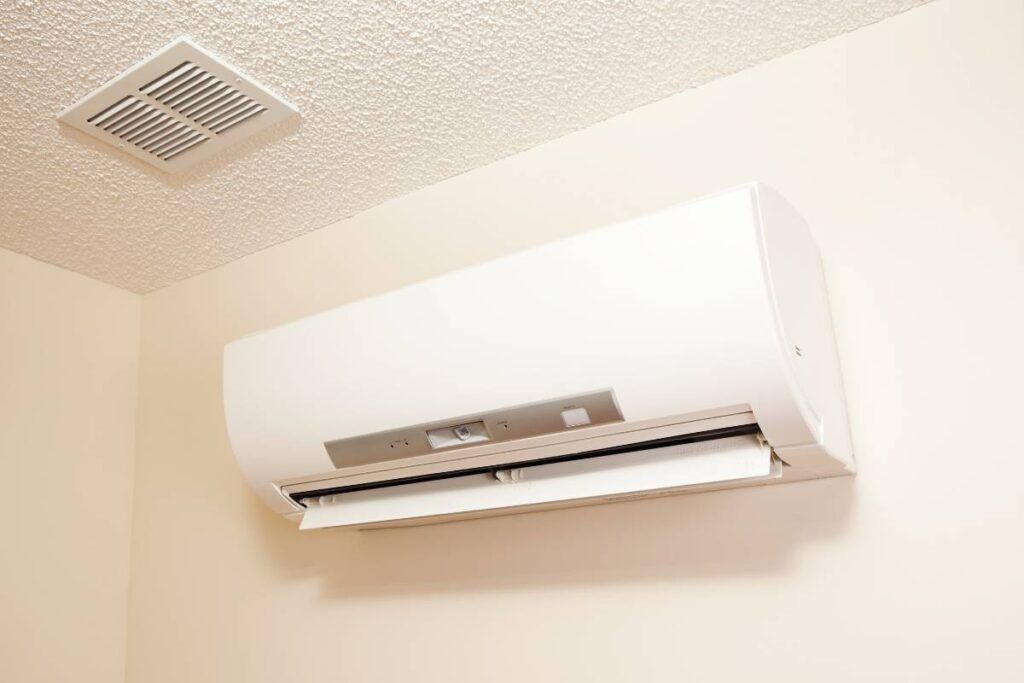The defrost cycle in the heat pump helps your unit to work efficiently in the winter by melting the ice buildup. As a new heat pump owner, you might wonder how often a heat pump defrosts.
Generally, a heat pump goes into the defrost mode after every 35 minutes whenever the temperature goes below freezing temperature, i.e., below 30°F. Each defrosts cycle runs for approximately 10-15 minutes. However, if the unit goes to the defrost mode too often, then it signifies a problem.
There are different frequencies of the defrost cycle, and the timing depends on the outside temperature. This article will explain the importance of the defrost cycle, how often it should defrost, and the reasons behind the frequent defrost cycle.

Check out our list of top-handpicked products for all your electrical, appliance, and HVAC system needs to keep your home running smoothly.
This post includes some affiliate links.What does the heat pump’s defrost cycle do?
The defrost cycle in the heat pump unfreezes the ice buildup of the unit during the winter.
Generally, the heat pump absorbs heat from the outdoor temperature and transfers the heat to your house.
Since the outdoor air is cool, the outdoor coil plays the role of the evaporator.
When the outdoor temperature goes below the freezing point, the air moisture will freeze in the outdoor unit’s heat exchanger and freeze the unit.
It is when the defrost mode turns on the defrost cycle to melt this ice buildup.
Why is the defrost cycle important?
Most heat pumps will freeze in the winter, especially if you live in areas where the temperature drops below 30°F.
The defrosting mode starts when the temperature goes beyond 32-35°F.
The defrost cycle helps in melting the ice from the condenser pipes to keep the heating process from stopping.
If your unit lacks in the defrost cycle, you will face the following issues:
Reduced heat output

The heat pump won’t be able to extract enough heat from the outside if the condenser coils are covered with ice.
The defrost cycle helps thaw the frozen condenser coils and helps the unit bring in the heat.
Reduces heat efficiency
Even if your heat pump does not have a defrost mode, it will try to give you enough heat.
But the unit has to work harder due to freezing temperatures and maintain the thermostat’s setting.
As a result, your unit will use more power and reduce its efficiency.
Damaged components
If there is no defrost, your condenser coils will remain frozen.
It can further bring doom to the unit’s compressor.
If the ice does not melt, it will damage your compressor and your unit, burst the condenser coil, leak refrigerant, and break the fan blades.
To prevent these problems from happening, you should ensure that your heat pump’s defrost cycle is working properly.
How often should the heat pump start the defrost mode?
Generally, the defrost cycle in the heat pump starts after every 35 to 40 minutes of running.
The heat pump starts defrosting once or twice every hour and a maximum of three times every two hours.
But the frequency does not remain the same in all cases.
The outside temperature highly affects the defrost cycle frequency.
Sometimes, the heat pump starts once or twice every 60 minutes or 90 minutes.
In each cycle, the defrost mode runs for 10 minutes.
When the temperature drops below 60°F, the heat pump will start freezing and build snow inside or outside the unit.
When the temperature goes beyond 57°F, your heat pump will start the defrost cycle to melt this ice buildup.
At such a temperature, the heat pump defrosts every 60 to 90 minutes.
But, if the temperature is below 30-35°F, the heat pump defrosts every 30 to 45 minutes.
If the heat pump does not defrost, the ice will not melt, and your unit may suffer other issues.
If your unit is not defrosting, it is having some serious issues. So, make sure your unit’s defrost mode is fine.
Can I shorten the time frequency of the defrost cycle?

Generally, 30, 60., and 90 minutes are the standard frequency of the defrost cycles.
You can change the timing, but only for a few seconds. Decreasing too much will increase the defrosting frequency and reduce the unit’s efficiency.
To change the time:
- Locate and remove the defrost sensor connection from the defrost control boards.
- Place a jumper across the control boards. The jumper will simulate the closed sensor.
- Check the board and find out two pins labeled as SPEED UP.
- Place the jumper properly or short the two pins.
- It will speed up the defrost cycle to a few seconds.
Factors affecting the defrost cycle frequency
The defrost cycle starts every 30, 60, and 90 minutes based on the outdoor temperature.
But besides the temperature, several more factors affect the frequency of the defrost cycle.
These factors are not issues for frequent defrost cycles.
They are common, and there is no control over them.
Below are some of them:
The defrost sensor and outdoor temperature.
The defrost cycle only starts if the defrost sensor remains closed. It is mounted in the condenser.
The sensor will close only when the condenser coils’ temperature is low enough to cause frosting.
The heat pump will not run the defrost cycle for the entire day if the outdoor temperature of your area is average.
When the sensor closes due to freezing temperatures, the heat pump’s control board will save the accumulated running time of the compressor.

Accumulated run time
The compressor should reach the gathered run time selected on the control board’s jumper to start the defrost cycle.
A heat pump can generally defrost every 30, 60, and 90 minutes if the outdoor coils stay below 30 to 50°F.
If the selected run time is 30, the compressor will reach an accumulated runtime of 30 minutes to start the defrost cycle.
It means your unit will defrost every 30 minutes.
You can change the timing based on your outdoor temperature.
If the defrost sensor warms your house and opens before the runtime setup, the control board will reset the runtime to zero.
As a result, the defrost cycle will start again to meet the accumulated runtime.
Heat load
If the load in the heat pump is too much, the condenser coils will shed heat faster.
As a result, the coils will freeze more often and turn on the defrost cycles frequently.
Outdoor humidity
Excessive high humidity can make the defrost cycle run frequently.
High humidity levels mean excessive moisture gathering.
So, excessive moisture buildup will turn into frost and result in frequent defrost cycles.
Appliance age

The old heat pumps struggle to function even with the slightest load.
As a result, the heating load increases, and the unit constantly starts the defrost cycle.
The older units also pump the refrigerant very slowly.
It can freeze your unit and provoke it to turn on the defrost cycle frequently.
Why does the heat pump defrost too often?
The heat pump going to the defrost mode every 30, 60, or 90 minutes is normal.
But if it defrosts too often, like 1-2 times within 30 minutes, it signifies a problem in your unit.
Here are a few issues we came over:
Leakage in the refrigerant tubes
The refrigerant leakage will affect the defrost cycle’s frequency.
The unit will remain fine when the refrigerant tube has enough liquid.
Once the tube leaks and the condition worsens, your heat pump will freeze, and the unit frequently goes to defrost mode.
As a result, the unit becomes less efficient within a short period.
You must hire a professional to repair or replace the tube.
Old units pump the refrigerant liquid slowly, which can further freeze your unit and turn on the defrost frequently.
Damaged reversing valve
A damaged reversing valve will also affect the frequency of the defrost cycle.
The reversing valve changes the direction of the refrigerant flow as per the cooling and heating system.
If the valve is damaged, it won’t be able to change the refrigerant’s direction between the coils.
As a result, your unit will freeze and turn on the defrost cycle frequently.
You need a professional to fix the reversing valve.
Bad outdoor coil

Damaged outdoor coils restrict adequate airflow and freeze your unit.
As a result, your unit will frequently be going to defrost mode.
Check the coils regularly to see their condition.
Sometimes, the coils can be damaged when you try to clean them without guidance.
Hire a professional to fix the coils.
Error in the temperature sensor or condenser controller
When your unit has abnormal defrost cycles, it indicates an error in the temperature sensor or condenser control circuit.
You should call a professional for confirmation and a checkup of the unit.
Other issues
If the outdoor unit defrosts frequently, suspect a small compressor size, dirty air filters, and filthy condenser coils.
These problems will restrict the airflow and freeze the internal components.
As a result, the unit will defrost too often.
Change the air filters every 3 to 4 months, clean the condenser coils with cleaning agents, and replace the compressor with the right size.
If you feel hesitation, hire a professional to fix the problems.
How to know when the heat pump is in defrost mode?
There are two ways to understand that the heat pump has entered the defrost mode:
From the inside

When your system is not heating your room anymore, your unit is likely running on the defrost mode.
You cannot look into the unit to confirm the running of the defrost cycle.
But you can understand it with the help of the light.
During the defrost cycle, your unit will have a blinking light.
It is a visual indicator that helps you know about the defrost cycle’s running.
From the outside
When the unit runs in defrost mode, it won’t spread any warm air, and the fan will remain off.
Along with that, your compressor will remain on.
You will hear a slight noise if you are close to the unit.
It is enough to understand whether the defrost cycle is running or not.
Can I force the heat pump to defrost?
Sometimes, the defrost cycle will not work.
If you suspect a problem, you should inspect it and solve it with the help of an expert.
You can force your unit to start the defrost cycle by turning on the fan.
The blowing air will melt the unit within an hour.
If the temperature outside is very low, set up the fan on the exhaust setting.
Another way to start the defrost cycle is to turn it on manually.
Changing the valve to the air conditioning mode will turn on the defrost cycle.
Once you do this, the outside fan will turn off, and change the evaporator into a condenser.

However, letting the fan on will only partially solve the freezing problems. It will solve the issue temporarily.
Check if your unit is facing any problems starting the defrost cycle for a permanent solution.
You may go through our article, where we have covered the primary reasons behind the heat pump not defrosting and how to troubleshoot them.
Final thoughts
Whenever your region drops the temperature below 50°F, the heat pump will start freezing.
Below 32°F, the heat pump will begin its frost cycle.
The standard timings for running the heat pump are every 30, 60, and 90 minutes.
You can set three timings based on the outside temperature and ice buildup speed.
In every cycle, the heat pump runs for 10 minutes.
Several factors can affect the defrost cycle frequency, like outdoor temperature, defrost stopped before the accumulated run time, appliance age, etc.
If your heat pump defrosts too often, expect issues like refrigerant leaks, a damaged reversing valve, a bad outdoor coil, filthy filters, and dirty coils.
Call an HVAC for troubleshooting.
Can I reduce defrosting?
You can reduce the defrosting frequency by taking good care of your unit, carrying out seasonal maintenance, and cleaning the unit every 8 to 12 weeks.
How much frost is normal on the heat pumps?
A frost buildup that melts within 60 to 90 minutes and does not restrict the unit’s airflow is normal. If the ice buildup stays for more than 2 hours, call a professional HVAC for the unit’s checkup before the unit gets covered with frost.
